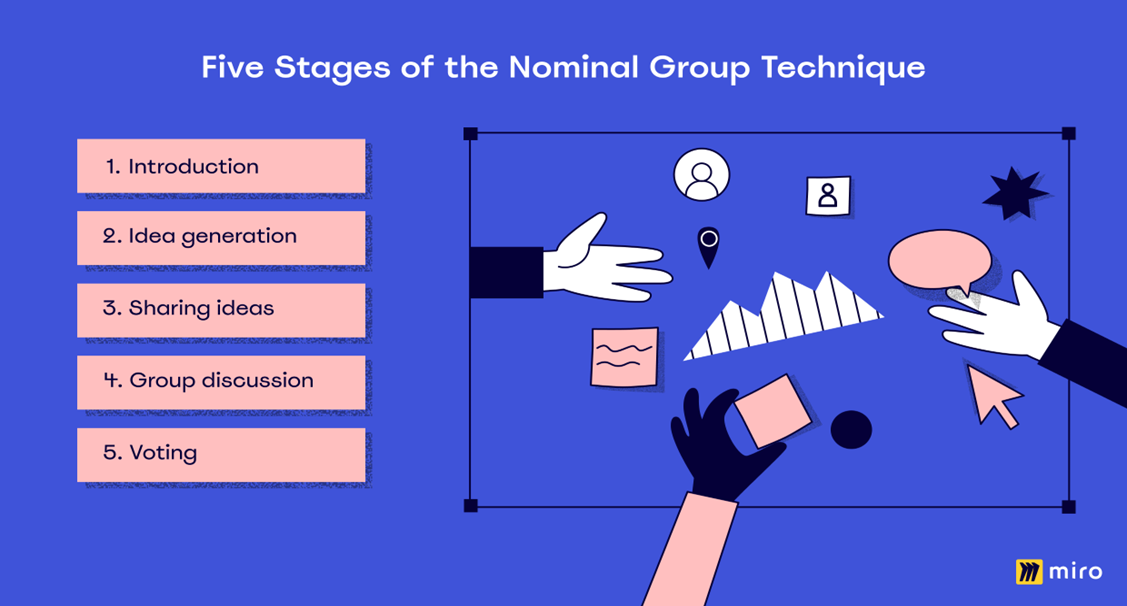A nurse and a community team are deciding on methods to use for data analysis to assist with prioritizing community needs. Which of the following data analysis methods uses a questionnaire?
Quick and colorful approach
The simplex method
Criteria weighting method
Nominal group planning
The Correct Answer is D
Choice A Reason:
The quick and colorful approach is a method often used for brainstorming and generating ideas in a visually engaging manner. It involves using colorful charts, sticky notes, and other visual aids to help participants think creatively and organize their thoughts. However, this method does not typically involve the use of questionnaires for data collection.
Choice B Reason:
The simplex method is a mathematical approach used for linear programming and optimization problems. It helps in finding the best possible solution from a set of feasible solutions. This method is highly analytical and does not involve the use of questionnaires for data collection or analysis.
Choice C Reason:
The criteria weighting method is used to evaluate and prioritize different options based on specific criteria. Participants assign weights to each criterion based on its importance, and then score each option against these criteria. While this method is useful for decision-making, it does not inherently involve the use of questionnaires for data collection.
Choice D Reason:
Nominal group planning is a structured method for group brainstorming that encourages contributions from everyone. It involves the use of questionnaires to gather individual opinions and then aggregates these responses to identify the most important issues or solutions. This method is particularly effective for prioritizing community needs as it ensures that all voices are heard and considered.

Nursing Test Bank
Naxlex Comprehensive Predictor Exams
Related Questions
Correct Answer is D
Explanation
Choice A Reason:
A cluster refers to an aggregation of cases of a disease or other health-related condition in a specific area and time period that is greater than expected. Clusters are often the initial indication of an outbreak but do not describe the widespread nature of a pandemic.
Choice B Reason:
An epidemic is an outbreak of a disease that spreads quickly and affects many individuals at the same time within a specific geographic area or population. While an epidemic can be severe, it is typically confined to one region or country. The term "pandemic" is used when the disease spreads across multiple countries or continents.
Choice C Reason:
Endemic refers to the constant presence and/or usual prevalence of a disease or infectious agent within a geographic area or population group. Diseases that are endemic are consistently present but typically do not cause the widespread impact seen in pandemics.
Choice D Reason:
A pandemic is an epidemic that has spread across a large region, for instance, multiple continents or worldwide, affecting a substantial number of individuals. The COVID-19 outbreak in 2020 is a prime example of a pandemic, as it spread globally and prompted widespread disease control measures.
Correct Answer is A
Explanation
Choice A: Make a Report to Child Protective Services (CPS)
This is the correct action for the nurse to take. Nurses are mandated reporters, meaning they are legally required to report any suspected cases of child abuse or neglect to the appropriate authorities. Child Protective Services (CPS) is the agency responsible for investigating reports of child abuse and ensuring the safety and well-being of children. Reporting to CPS ensures that the case is handled by professionals trained to investigate and intervene in such situations.
Choice B: Call the Police and Report the Suspected Abuse
While calling the police may seem like a logical step, it is not the primary action a nurse should take in this situation. The police may become involved later in the process, especially if there is an immediate threat to the child's safety. However, the initial report should be made to CPS, as they are the designated agency for handling child abuse cases.
Choice C: Call the Child's Guardian to Have the Child's Pediatrician Confirm the Suspected Abuse
This action is not appropriate because it could potentially place the child in further danger. If the guardian is the abuser, notifying them could lead to retaliation against the child or attempts to cover up the abuse. Additionally, it is not the role of the pediatrician to confirm abuse; this is the responsibility of CPS and law enforcement.
Choice D: Alert the School Principal of the Situation
While it is important to keep school officials informed, the nurse's primary responsibility is to report the suspected abuse to CPS. The school principal can be informed after the report has been made, but the immediate priority is to ensure the child's safety by contacting the appropriate authorities.

Whether you are a student looking to ace your exams or a practicing nurse seeking to enhance your expertise , our nursing education contents will empower you with the confidence and competence to make a difference in the lives of patients and become a respected leader in the healthcare field.
Visit Naxlex, invest in your future and unlock endless possibilities with our unparalleled nursing education contents today
Report Wrong Answer on the Current Question
Do you disagree with the answer? If yes, what is your expected answer? Explain.
Kindly be descriptive with the issue you are facing.
